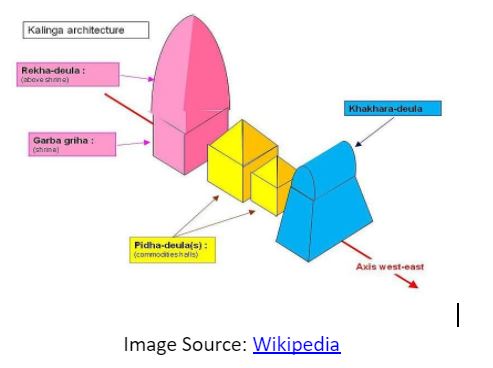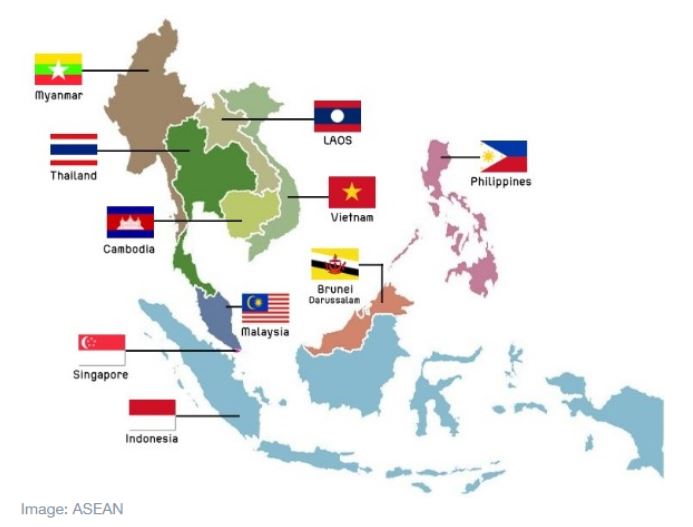IASbaba's Daily Current Affairs Analysis
Archives
(PRELIMS + MAINS FOCUS)
Million tons of Microplastic pollution in the Atlantic Ocean
Part of: GS-Prelims and GS-III – Environment
In News:
- A study was published in ‘Nature Communications’ about micro plastic pollution in the Atlantic Ocean.
- The pollution is put at 11.6-21.1 million tonnes.
Key takeaways
- Top 200 meters of the Atlantic was measured.
- Pollution caused by three types of plastics was studied – polyethylene, polypropylene, and polystyrene.
- These are most commonly used for packaging.
- Both inputs and stocks of ocean plastics may be much higher than determined.
- Assessment across all sizes and polymer groups is important to determine the danger of plastic pollution.
Important value additions
Plastic
- It is a synthetic organic polymer made from petroleum.
- Applications:
- Packaging
- Building and construction
- Household and sports equipment
- Vehicles
- Electronics
- Agriculture
- It is cheap, lightweight, strong and malleable.
- Sources of Marine Plastic:
- Land-based and storm runoff
- Sewer overflows
- Beach visitors
- Inadequate waste disposal
- Impact of Plastic Pollution
- Ingestion, suffocation and entanglement of hundreds of marine species.
- The transfer of contaminants between marine species and humans through seafood consumption.
- Contribution to global warming
Shortcomings of Indian Chemical Industry: TIFAC
Part of: GS-Prelims and GS-III – Industries
In News:
- Recently, a report by the Technology Information Forecasting and Assessment Council (TIFAC) was released.
- TIFAC is an autonomous organisation and think-tank of the Department of Science and Technology.
- It has highlighted the shortcomings of the Indian chemical industry which prove to be barriers in competing with China.
Key takeaways
- India lacks enough technology, plants and infrastructure to manufacture key chemicals in a cost-effective and less polluting manner.
- Manufacturing of several key Active Pharmaceutical Ingredients (API) are nearly stopped.
- India depends on China for 67% of chemical intermediates and API and almost entirely for chloroquine and hydroxychloroquine (HCQ).
- Manufacturers are unable to meet the price at which chemicals are produced by China.
Important value additions
Active Pharmaceutical Ingredients
- These are significant ingredients in the manufacturing of drugs and are also called bulk drugs.
- The Hubei province of China is the hub of the API manufacturing industry.
Revamp of Lingaraj Temple, Odisha
Part of: GS-Prelims and GS-I – Art & Culture
In News:
- The Odisha government has decided to give a facelift to the 11th century Lingaraj Temple, similar to its pre-350-year structural status.
- This is a part of the Lingaraj Temple Heritage Development Project under Ekamra plan.
- Through Ekmara plan, it is expected that heritage redevelopment will enhance the attraction of Bhubaneswar as a tourist site and claim for a UNESCO heritage site will be stronger.
Important value additions
Lingaraj Temple
- It was built in 11th century AD.
- Dedicated to: Lord Shiva.
- The largest temple of the city Bhubaneswar.
- It is believed to have been built by the Somvanshi King Yayati I.
- It is built in red stone.
- It is a classic example of Kalinga style of architecture.
- The temple is divided into four sections:
- Garbha Griha (sanctum sanctorum)
- Yajna Shala (the hall for prayers)
- Bhoga Mandap (the hall of offering)
- Natya Shala (hall of dance).
- It signifies the convergence of Shaivism and Vaishnavism sects in Odisha.
- The presiding deity of the Temple: Hari-Hara.
- The other attraction of the temple: Bindusagar Lake.
- Other Important Monuments in Odisha:
- Konark Sun Temple (UNESCO World Heritage Site)
- Jagannath Temple
- Tara Tarini Temple
- Udaygiri and Khandagiri Caves

Image source: Click here
ASEAN-India network of think tanks (AINTT) organised
Part of: GS-Prelims and GS-II – Global Groupings; International Relations
In News:
- 6th Round Table of ASEAN-India Network of Think Tanks (AINTT) was recently organised.
- Organized by: Indian Ministry of External Affairs and Foreign Ministry of Thailand.
- Theme: ‘ASEAN-India: Strengthening Partnership in the Post COVID Era’.
Important value additions
The ASEAN-India Round Table
- Established at: 7th ASEAN-India Summit in Thailand in 2009.
- Objective: To provide policy inputs to Governments on future direction of cooperation.
- Comprises of: Think tanks, policy makers, scholars, media and business representatives.

Image source: Click here
Mobile App called HARIT PATH developed
Part of: GS-Prelims and GS-III – Infrastructure:Roadways; Environment; Sustainable Development
In News:
- A mobile App called ‘Harit Path’ is recently developed.
- Developed by: The National Highways Authority of India (NHAI).
- Objective: To monitor:
- location,
- growth,
- species details,
- maintenance activities,
- targets and achievements
- It shall include each field units for each and every plant under all plantation projects.
- The launch will further facilitate creation of Green Highways across India.
- NHAI has also recently undertaken ‘Harit Bharat Sankalp.
- It is a nation-wide plantation drive to promote environment protection and sustainability.
- Under this initiative, NHAI planted over 25 lakh plants in 25 days along the stretches of the National Highways between 21st July to 15th August 2020.
Miscellaneous
Kariye Museum
- Turkey has decided to to convert another church into a mask after hagia Sophia
- It was an ancient Orthodox church that became a mosque and then a popular Istanbul museum.
(MAINS FOCUS)
ECONOMY/ GOVERNANCE
Topic: General Studies 2,3:
- Indian Economy and issues relating to planning, mobilization, of resources, growth, development
- Government policies and interventions for development in various sectors
Handloom Sector
Context: Sixth edition of National Handloom Day was celebrated on 7th August 2020 which was marked by announcements by Ministry of Textiles
Some of the announcements were
- The termination of the handloom, powerloom, wool, jute and silk boards – To reduce bureaucratic red tapes
- The integration of plans for the sector with other ministries like Tourism, Culture, Women & Child development – To synergise efforts of multiple ministries
- National Institute of Fashion Technology students and faculty are to guide nine Weavers’ Service Centres. This is a good move for their revival as many have potential – Infusion of knowledge & skills into weavers
Do You Know?
- August 7 was chosen as the National Handloom Day to commemorate the Swadeshi Movement which was launched on this day in 1905 in Calcutta Town Hall to protest against the partition of Bengal by the British government.
Importance of Handloom
- A hallmark of Indian culture: Almost every state of India has a unique handloom product to offer such as Phulkar from Punjab, Chanderi from Madhya Pradesh, Ikats from Andhra Pradesh, Daccai from West Bengal, Brocade from Benares
- Global Recognition: Indian handloom is rich in variety and is appreciated all over the world over for its craftsmanship and intricacy of designs and thus holds huge potential in global textile market
- Employment Provider: The handloom industry is one of the largest unorganized sectors of economic activity in India providing employment to 43.31 lakh weavers from rural and semi-urban areas
- Rural Centred Industry: According to the Fourth All India Handloom Census 2019-20, 31.45 lakh households are engaged in handloom, weaving and allied activities, out of which 87% are in rural areas and the remaining 13% are in urban areas
- Large Female Workforce: Most of the weavers are women and people from economically disadvantaged groups and 77% of the adult weavers are women.
- Easy to Start as it entails minimal use of capital and power
- Aligned with Sustainable Development due to environment friendly production processes
- Flexibility to innovate due to the specialty in the weave of the textiles in each region that is developed based on location, climate and cultural influences.
- Livelihoods to weaker Sections of Society: Nearly 68% of the handloom workers belong to SC, ST & OBC groups
Government Intervention for promotion of the sector
- The National Handloom Development Programme which provides concessional credit, support to several block level cluster projects, marketing assistance.
- The government also has yarn supply schemes, export promotions, Geographical Indication of goods, E-Dhaga app and several other schemes and initiatives.
Challenges with the Handloom Sector
- State handloom boards (wherever they exist) are not enough as their outreach and vision are limited to the state and responses often depend on vote shares.
- Ineffective Implementation: The Handloom Mark is emphasised, but methods for ensuring its purity are not clear.
- Skill gaps to access IT infrastructure: If weavers have to avail of all knowledge from a special handloom portal, they need connectivity, computers and digital knowledge, which is lacking for majority of weavers
- Anti-Gandhian approach: The declaration of intent of recent announcement is to sell handlooms at “the highest price at the highest level”. Selling expensive cloth to the wealthiest will shrink, not expand the market. The poor man’s cloth has been taken over by powerlooms.
- Increasing Raw material costs: From cotton, silk, and woollen yarn to dyes, costs have increased and so has the shortage.
- Reduced Governmental Financial Support: The Textile Association of India stated that the budget allocation for the textile sector came down to Rs 4,831 crore in (2019-2020) from Rs 6,943 in the previous fiscal.
- Accessibility Issues: Poor infrastructure, older looms and inaccessibility to reach prime markets have made lives of handloom weavers even more difficult.
Way Ahead
- Local production for local markets is a brilliant strategy and needs encouragement.
- Need to implement the recommendations of Satyam and Ajai Shankar committee reports
Connecting the dots:
- Kasturirangan Report which formed the basis for the New Education Policy 2020.
(TEST YOUR KNOWLEDGE)
Model questions: (You can now post your answers in comment section)
Note:
- Correct answers of today’s questions will be provided in next day’s DNA section. Kindly refer to it and update your answers.
- Comments Up-voted by IASbaba are also the “correct answers”.
Q.1 Which of the following are main sources of marine plastic pollution?
- Storm runoff
- Sewer overflows
- Beach visitors
- Inadequate waste disposal
Select the correct code:
- 1 and 2
- 2 and 4
- 1 only
- 1, 2, 3 and 4
Q.2 Consider the following statements:
- APIs are important ingredients in the manufacturing of drugs.
- India exports large amount of APIs to China.
Which of the above is/are correct?
- 1 only
- 2 only
- 1 and 2
- Neither 1 nor 2
Q.3 Lingaraja Temple is situated in which of the following state of India?
- Odisha
- West Bengal
- Gujarat
- Kerala
ANSWERS FOR 21sth August 2020 TEST YOUR KNOWLEDGE (TYK)
| 1 | B |
| 2 | D |
| 3 | D |
| 4 | A |
Must Read
About reforms in Sri Lankan Constitution:
About post-pandemic future:
About Judicial criticism by Prashant Bhushan:














